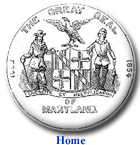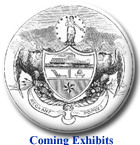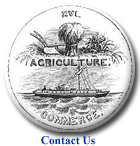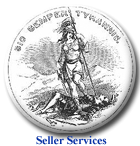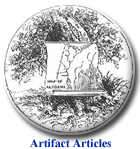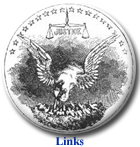| Article Archive | |
| Article I - English Imports | |
| Welcome to the first in a series of articles related to Civil War memorabilia. Here we will briefly discuss English imports that made their way to both the Union and Confederate armies. When people think of the Civil War, they fail to realize that in the beginning, both sides imported vast amounts of weapons and supplies because of the limited production capacity of US factories. How were imports arranged? Purchasing agents from both the United States government and from individual Southern states, made their way to England so as to secure contracts from manufacturers and distributors. One such person, Caleb Huse, was credited with arranging the importation of over 300,000 arms and related supplies to the Confederacy. Others imported such items as uniforms, textile materials, handguns, swords, knapsacks - you name it. You see, it was much more difficult for Southern states to acquire the much needed weapons than their Union counterparts and because of this, lucrative business opportunities were realized. Also, items scheduled for export to the United States or the Confederate States were usually of inferior quality compared to items that would have been issued to the exporting country’s military. Longarms? One of the chief longarms of the Civil War for both sides was the P-53 Enfield rifle-musket. This weapon, a .577 caliber, was used by both the Union and Confederate armies. While the Union acquired these weapons by central government purchase, the Confederate states each had buying representatives to make these acquisitions. After Confederate agents made their purchases, certain stampings would be made on the items so as to make sure they were delivered to their intended parties. For example, on some Enfield rifle-muskets, you may observe an oval Birmingham stamp on the stock which was the exporters stamp. You may also find letters and/or numbers on the stock and even the ramrods of some weapons. Letters such as "G” or "SC” stood for the states of Georgia and South Carolina respectively. Serial numbers on the butt plate tang and the ramrod were usually rack numbers assigned by the Confederate importers when they came in off the blockade runners. These numbers should appear to be carved into the metal and not stamped. These letters and sometimes even the serial numbers were also added to swords, and other weapons as well. One other mark one may encounter on Confederate imported weapons is the "JS” over a ship’s style anchor. This mark was applied in England behind the trigger guard tang of both revolvers and muskets by an inspector under contract to Confederate authorities. Besides the "JS” markings and the state ownership markings, foreign companies would also contract to manufacture items especially for individual units and or officers. Sword makers such as Mole, would actually forge a sword for a particular purpose and the importer (I.e. Courtney and Tennant) would then stamp their name on the item. This was probably more of a form of advertisement on the part of Courtney and Tennant than anything else. Well, that concludes our brief article on imported weapons. This and the other articles that will follow are simply meant to entice your curiosity and not as the end-all be-all authority on the subject. Thank you. Best of Wishes, The Civil War Antiques Preservation Society |
|
Article Archive |
| Article I - English Imports |
| Article II - McDowell Pattern Cap |
| Article IV - US Infantry Frock Coat |
| Article V - Regulation US Eagle Drum |

